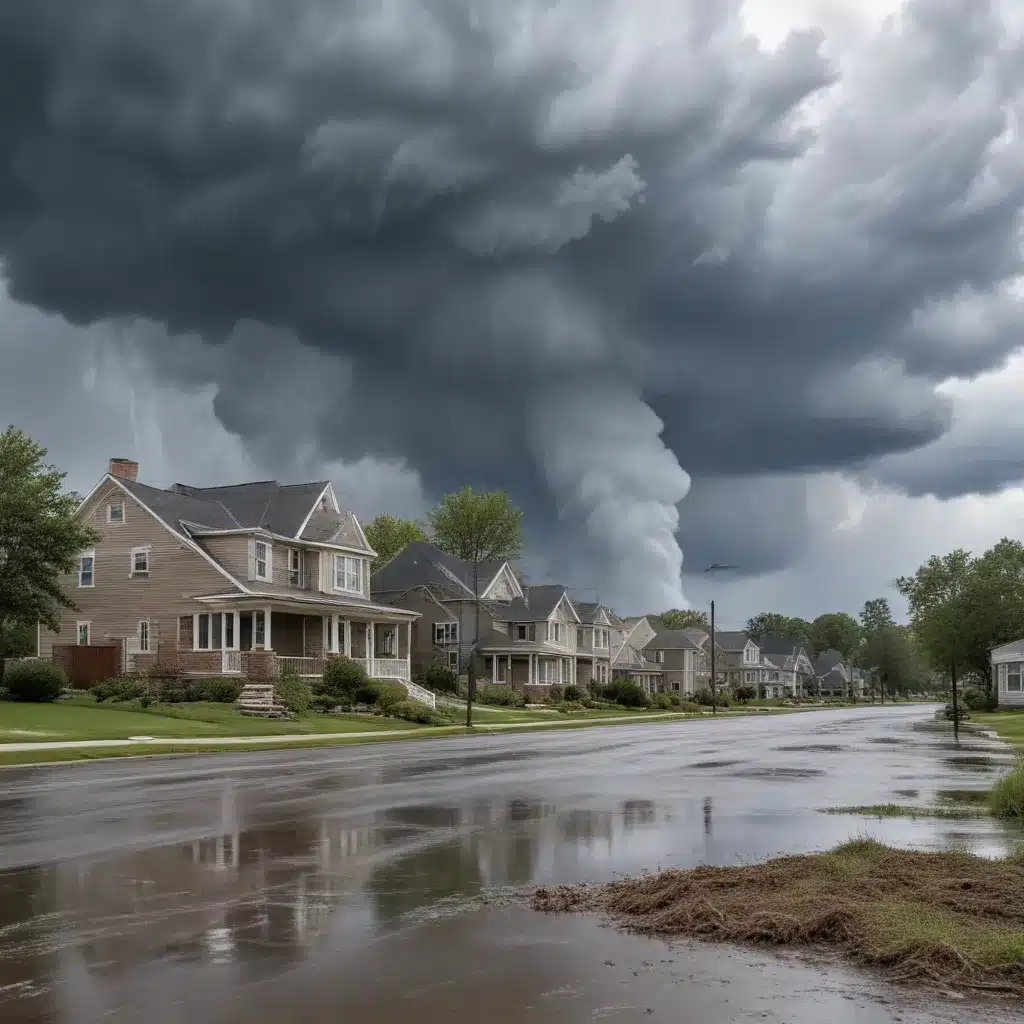
Preparing Your Home for the Changing Climate
As a seasoned construction professional and interior designer, I’ve seen firsthand the growing impact of extreme weather events on homes and communities. With the increasing frequency and intensity of storms, floods, heatwaves, and other climate-related challenges, it’s essential that homeowners take proactive steps to adapt and increase the resilience of their properties.
In this comprehensive guide, I’ll share expert insights and practical strategies to help you safeguard your home against the effects of extreme weather. From reinforcing your building’s envelope to implementing sustainable design solutions, we’ll explore a range of measures that can enhance your property’s ability to withstand and recover from these escalating threats.
Assessing Your Home’s Vulnerability
The first step in adapting your home is to understand its specific vulnerabilities to extreme weather. Conduct a thorough evaluation of your property, considering factors such as:
- Geographical location: Homes in coastal areas, floodplains, or regions prone to wildfires or severe storms may face heightened risks.
- Building design and construction: Older homes, poorly insulated structures, or those with outdated roofing, windows, or siding may be more susceptible to damage.
- Surrounding landscape: Trees, landscaping features, and drainage systems can impact how your home withstands heavy rain, high winds, or other environmental stresses.
By identifying your home’s vulnerabilities, you can prioritize the most critical adaptation measures and tailor your approach to your unique circumstances.
Strengthening the Building Envelope
One of the most effective ways to safeguard your home is to focus on reinforcing the building envelope – the physical barrier between the interior and exterior of your property. This includes:
Roofing
Upgrading to impact-resistant roofing materials, such as metal or specialized asphalt shingles, can significantly improve your home’s ability to withstand high winds and hail. Additionally, ensuring proper roof ventilation and securing roof fixtures can help prevent leaks and water damage during severe storms.
Windows and Doors
Installing impact-resistant windows and doors, or retrofitting your existing ones with impact-resistant films or shutters, can protect your home from flying debris and wind damage. You may also consider upgrading to hurricane-rated window and door systems in high-risk areas.
Siding and Exterior Walls
Selecting durable, weather-resistant siding materials, such as fiber cement or brick, can enhance your home’s resilience to extreme weather events. Proper wall insulation and sealing can also improve your property’s thermal performance and energy efficiency.
Foundation and Drainage
Evaluating the condition of your home’s foundation and ensuring effective drainage around the perimeter can help mitigate the risks of flooding and soil erosion. Consider reinforcing the foundation, improving grading, and installing drainage systems that divert water away from your property.
Implementing Sustainable Design Solutions
In addition to strengthening the physical structure of your home, incorporating sustainable design strategies can further enhance its resilience and adaptability. Some key considerations include:
Energy-Efficient Systems
Upgrading to high-performance HVAC systems, energy-efficient windows and doors, and smart home technologies can help your home better withstand extreme temperatures, reduce energy consumption, and maintain indoor comfort during power outages.
Renewable Energy Sources
Integrating renewable energy systems, such as solar panels or geothermal heating and cooling, can provide your home with a reliable, off-grid power source during grid disruptions caused by extreme weather events.
Water Conservation and Management
Implementing water-efficient fixtures, rainwater harvesting systems, and drought-tolerant landscaping can help your home better cope with water scarcity and flooding risks.
Passive Design Strategies
Leveraging passive design principles, such as strategic window placement, shading, and natural ventilation, can improve your home’s thermal performance and reduce the reliance on mechanical heating and cooling systems.
By combining these sustainable design elements with your structural reinforcement efforts, you can create a more resilient and environmentally responsible home that is better equipped to withstand the challenges of a changing climate.
Navigating the Adaptation Process
Adapting your home to extreme weather events can be a complex undertaking, but with the right guidance and resources, you can make informed decisions that protect your investment and safeguard your family.
The Local Builder London team can provide you with personalized support throughout the adaptation process, from conducting a thorough risk assessment to identifying the most suitable renovation and design solutions for your property. Our experienced construction professionals and interior designers can help you navigate the technical and practical aspects of your home adaptations, ensuring that your project aligns with building codes, sustainability best practices, and your specific needs and budget.
Remember, the cost of inaction can be far greater than the investment in proactive adaptation measures. By taking the necessary steps to prepare your home for extreme weather events, you can enhance its long-term resilience, minimize potential damages, and safeguard your family’s well-being.
Conclusion
Adapting your home to extreme weather events is not only a prudent decision but a necessary one in the face of a rapidly changing climate. By leveraging the expert insights and practical strategies outlined in this guide, you can take proactive steps to fortify your property, reduce your environmental impact, and ensure your family’s safety and comfort, no matter what challenges the future may hold.
If you’re ready to embark on your home adaptation journey, contact the Local Builder London team today. Together, we’ll work to transform your home into a resilient oasis that stands strong against the test of time and the forces of nature.


